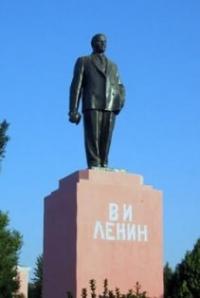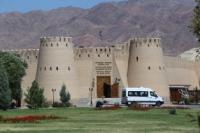Вы здесь
Sights in Khujand.


Excursion routes across Khudjand.
Khudjand is the second largest city in the country. It’s also one of Tajikistan’s oldest towns, founded by Alexander the Great more than 2,500 years ago. Commanding the entrance to the Ferghana Valley, Khudjand enjoyed great prosperity and its riches spawned palaces, grand mosques and a citadel, before the Mongols steam rolled the city into oblivion in the early XIIIth century.
In XVIII - XIX centuries Khudjand has grown extensively and has become one of largest cities of Central Asia, in spare not less than Kokand and Bukhara. In 1886 the city was joined to Russia, then destructive intertribal war of Bukhara and Kokand for Khojent were stopped.
In 1913 the first power station by capacity of 0,048 megawatts was put in to operation in the city. In 1929 the part of territory of the Uzbek SSR, into which then included Khudjand district and city, was transferred to the Tajik Autonomous Soviet Socialist Republic.
At that time the population of the district constituted hardly more than 250 000 people. In January 9, 1936 Khudjand was renamed into Leninabad, in honor of Lenin. This new name the city bored carried until 1990, when the ancient historical title - Khudjand was restored to it.
Now city is a large industrial center of Tajikistan producing two-thirds of Tajikistan’s GDP, with 75 % of the country’s arable land and one-third of the population. Modern Khudjand is a cosy, green city, with a lot of parks and squares, hospitable inhabitants.
The Syrdarya River flows directly in the center of the city and its convenient shores are perfect places for rest and swimming. By the way, Khudjand is the unique city in Tajikistan located on the large river.
Main sights are certainly known Panjshanbe Bazaar, attracting attention by its multi-colorful, exotic sounds and odors, variety abundance of fruit and vegetables, and the architectural complex of mosque and mausoleum of Sheikh Muslihiddin, which is located near to market (mausoleum was not kept in an initial form, only some fragments were kept from the structure of XI - XII centuries).
Take a look at the wooden carvings inside the side halls. The neglected, mausoleum was built in XIV century. The 21 m-tall minaret was added end of XIX century. The city’s oldest remains are the formless baked-earth walls of the citadel (X century), which once boasted seven gates and 6 km of fortifications.
The reconstructed eastern gate houses the Museum of Archaeology and Fortifications (just near the Hotel “Leninabad”), which has some interesting 19th century photos, old pottery and plans of the original citadel.
22 m-tall statue of Lenin was moved to Khudjand from Moscow in 1974. And now this statue which is on the north side of the Syrdarya River, 300 m beyond the bridge, probably the largest in Central Asia.
Kayrakkum Reservoir (“The Tajik Sea”) stretches out the east of city. By the way, the word “Kayrakkum” means “stone desert”. The “Sea” was created as a result of damming of the Syrdarya River by an earth and concrete dam of the Kayrakkum Hydroelectric Power Station of 130 meters of length.
Length of the reservoir is about 65 km, width is from 8 up to 20 km. In summer the level of water achieves 18 meters. Several attractive, sanatoriums, holiday centers and tourist bases having an appropriate infrastructure are located on its shores.
There are 2-3 daily flights from/to Khudjand to Dushanbe. The Tajikistan Airlines ticket office is near Panjshanbe Bazaar at Lenin Str. 56 (ph: + 992 34 22 70 05: 602 49) or at the airport in Chkalovsk town (fax: + 992/3451/5-95- 95, e-mail: info@sogdavia.com), which is about 10 km of the Khudjand center.
Shared taxis to Dushanbe (340 km via Shakhristan and Anzob Passes, about 12 - 13 hours) one can find at Chumchuk Aral bus stand in the northeastern suburbs.
Authorship:
The Tourist guidebook on monuments of Tajikistan. 2012.






